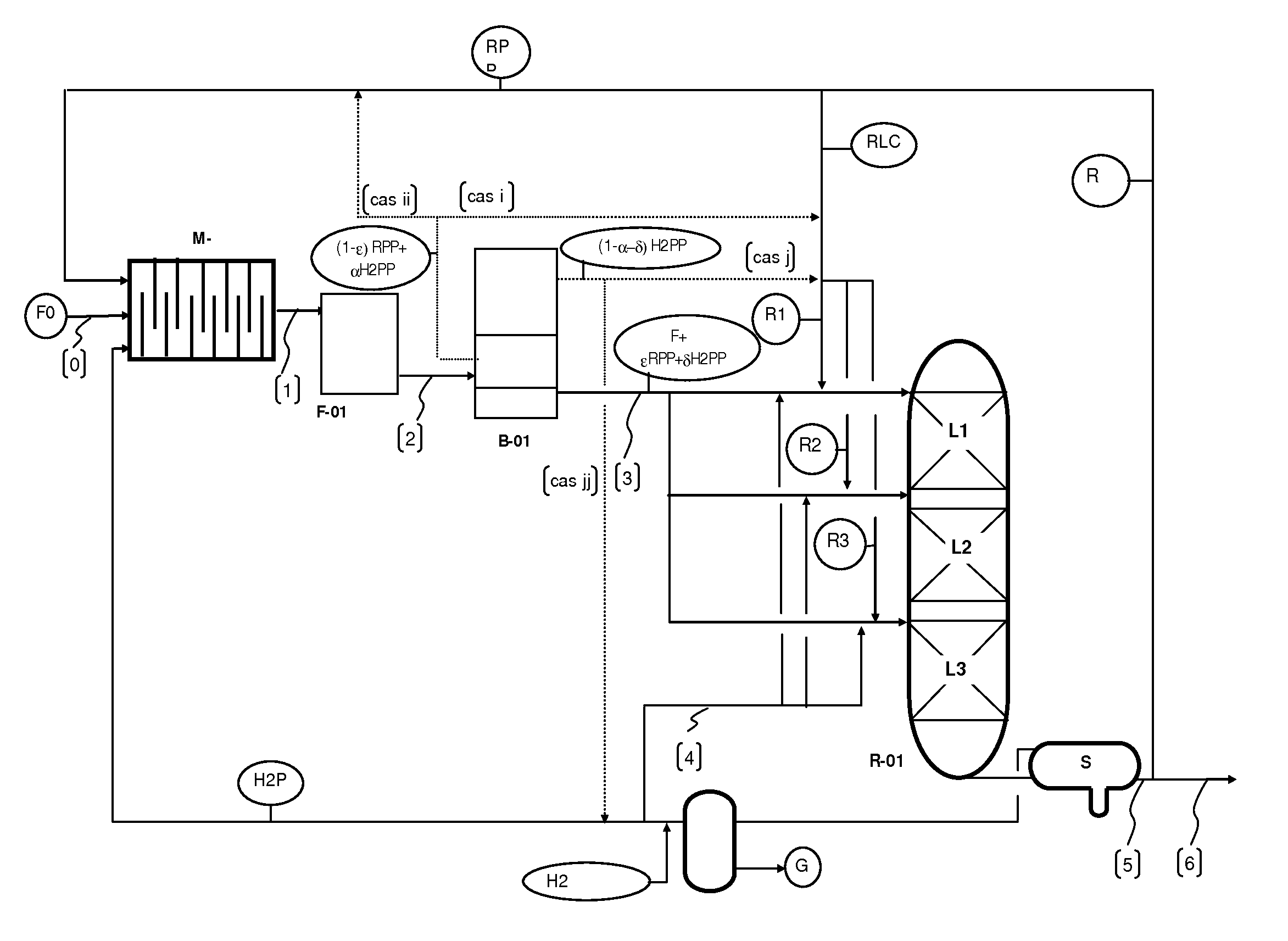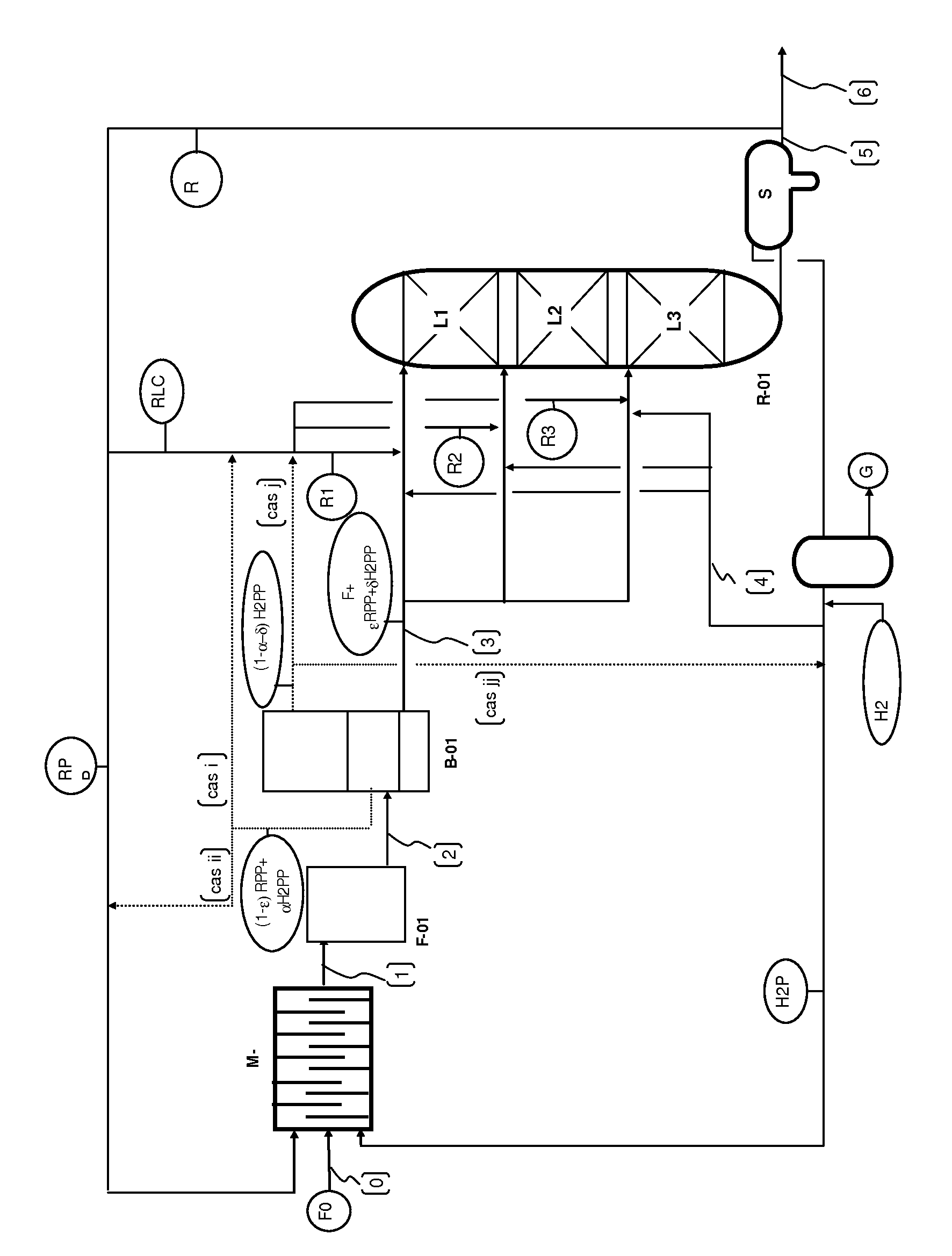Production of paraffin fuels using renewable materials by a continuous hydrotreatment comprising a pre-treatment step under hydrogen
a technology of paraffin fuel and hydrotreatment step, which is applied in the direction of waste based fuel, organic chemistry, chemistry apparatus and processes, etc., can solve the problems of difficulty in obtaining low nitrogen content levels of paraffinic fuel, limited total flow rate of reactor, and difficulty in carrying out hydrodenitrogenation reactions (hdn), etc., to promote hydrodeoxygenation reactions, improve thermal integration of process, and increase temperature profile
- Summary
- Abstract
- Description
- Claims
- Application Information
AI Technical Summary
Benefits of technology
Problems solved by technology
Method used
Image
Examples
example 2
In Accordance with the Invention
[0204]The same feed of semi-refined jatropha oil as in the previous example was treated, with an identical feed flow: Fo=F=100 g / h. The catalyst and its preparation were identical to example 1.
[0205]The quantity of liquid recycle used, R, was 100 g / h. This recycle was divided into a flow RLC containing the paraffinic hydrocarbons from separation step d), which was sent in its entirety to the first catalytic zone Z1, and the flow rate of which was 80 g / h, and a flow RPP of 20 g / h, which was mixed with the feed flow of rapeseed oil F0. The ratio RPP / F0 was thus 0.2. The flow of hydrogen-rich gas, H2P, containing 90% by volume of hydrogen (4% vol of methane and 6% vol of propane) was such that the ratio H2P / F0 was 930 NL / L and was injected with the flow F0 of the oil feed and the flow RPP of paraffins.
[0206]The jatropha oil was mixed with the RPP flow and the H2P flow in a mixer, and the mixture was heated to a temperature of 165° C. This mixture was int...
PUM
| Property | Measurement | Unit |
|---|---|---|
| temperature | aaaaa | aaaaa |
| temperature | aaaaa | aaaaa |
| weight ratio | aaaaa | aaaaa |
Abstract
Description
Claims
Application Information
 Login to View More
Login to View More - R&D
- Intellectual Property
- Life Sciences
- Materials
- Tech Scout
- Unparalleled Data Quality
- Higher Quality Content
- 60% Fewer Hallucinations
Browse by: Latest US Patents, China's latest patents, Technical Efficacy Thesaurus, Application Domain, Technology Topic, Popular Technical Reports.
© 2025 PatSnap. All rights reserved.Legal|Privacy policy|Modern Slavery Act Transparency Statement|Sitemap|About US| Contact US: help@patsnap.com


